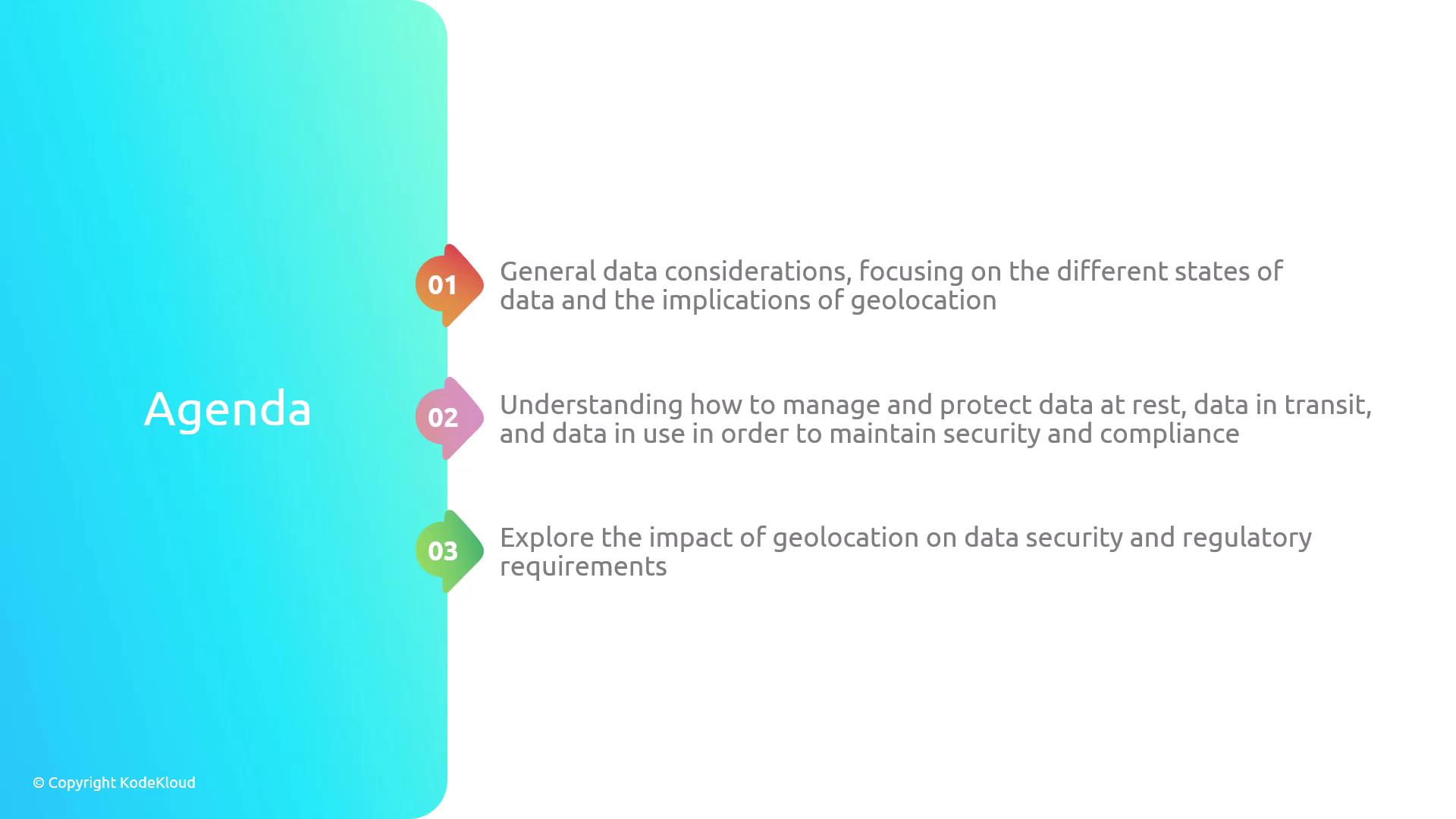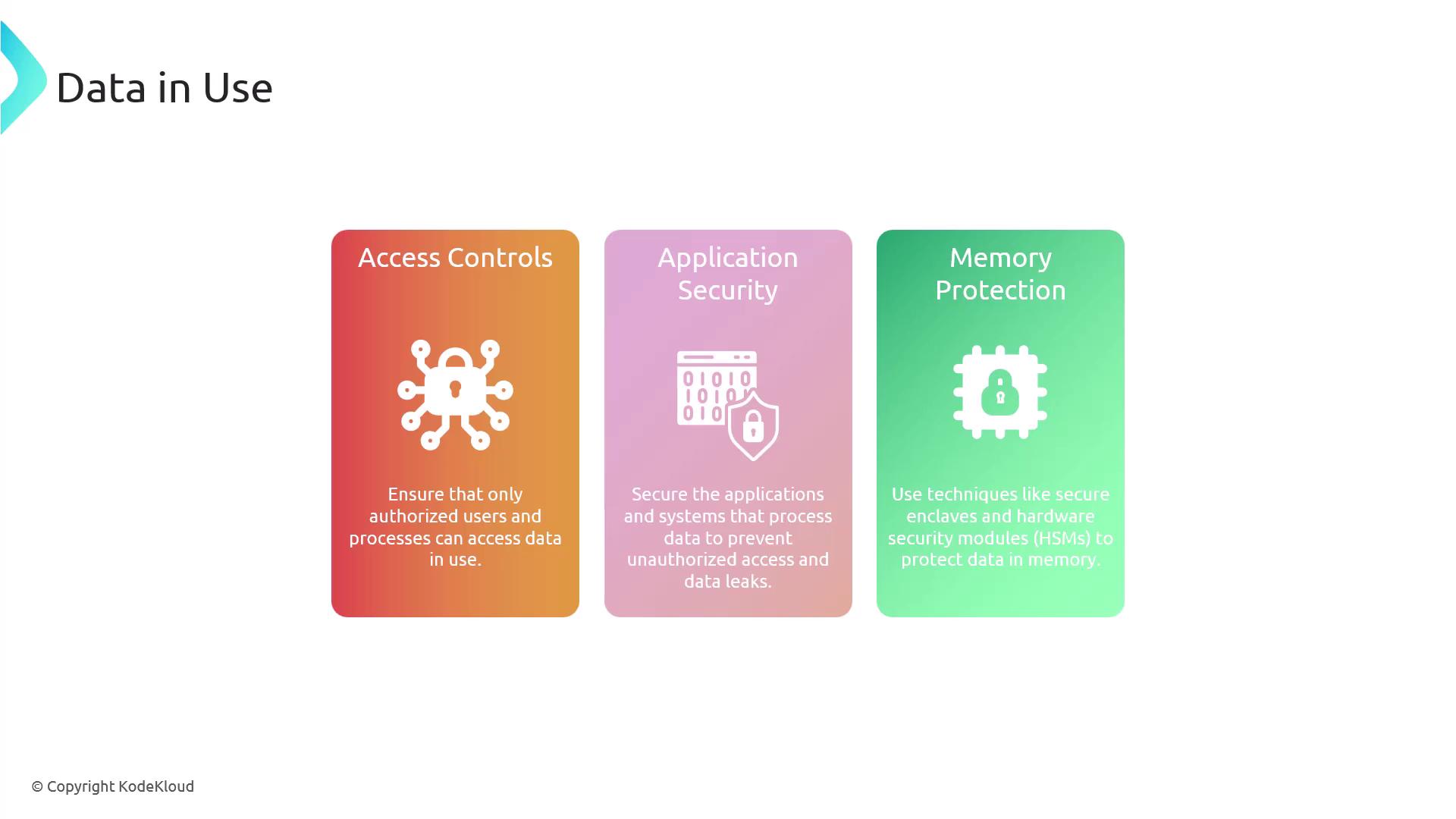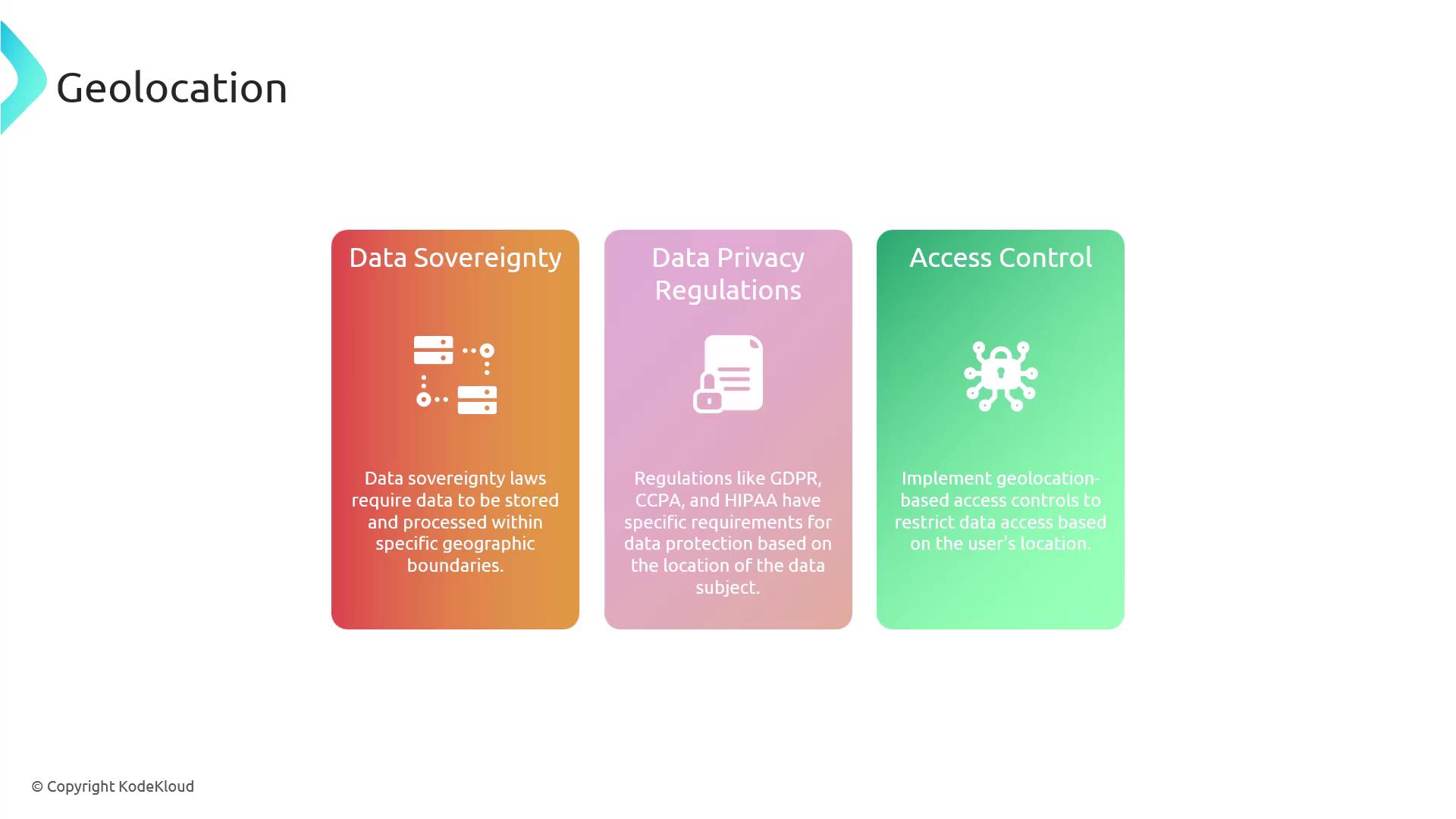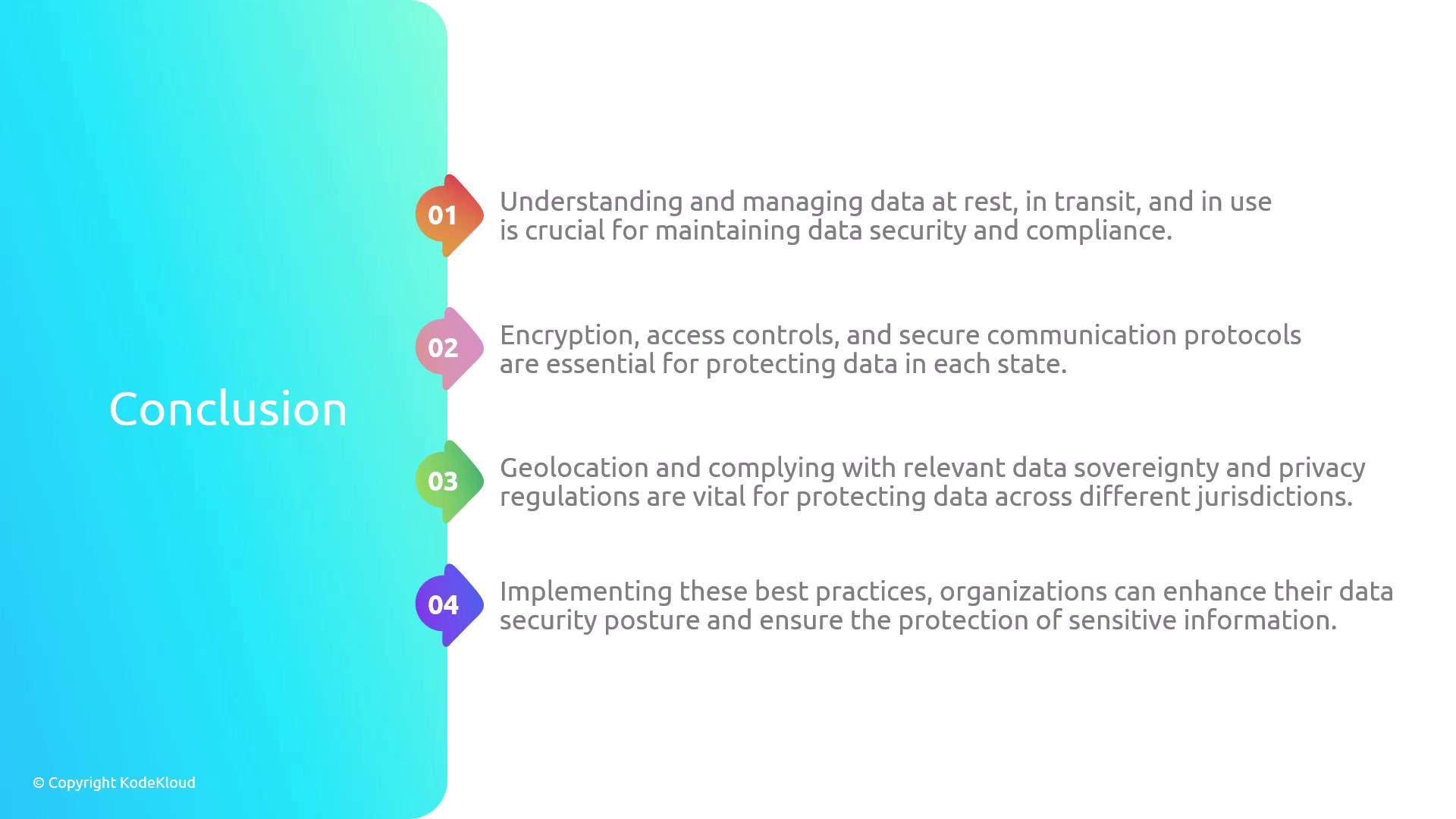CompTIA Security+ Certification
Security Architecture
Data States and Geolocation
Welcome to this comprehensive lesson on general data considerations and geolocation. In this article, we explore the three primary states of data—data at rest, data in transit, and data in use—and discuss how geolocation impacts data security and regulatory compliance.

We begin our discussion by examining the different data states, starting with data at rest.
Data at Rest
Data at rest refers to information stored on physical or virtual media that is not actively moving through networks or being processed. This includes databases, data warehouses, archives, or backups that reside on hard drives or other storage devices. Even though this information is inactive, it remains susceptible to unauthorized access if not properly secured.
Key security measures include:
- Encrypting stored data to protect it against unauthorized access.
- Enforcing strict access controls to minimize potential exposure.
- Performing regular security audits to ensure protection mechanisms remain effective.
For example, encrypting a database containing sensitive customer information with strong standards like AES-256 and applying role-based access controls can significantly improve data protection.

Note
Always ensure that data at rest is secured with modern encryption methods and regularly updated access controls to mitigate emerging threats.
Data in Transit
Data in transit is the information actively moving between locations, whether across the internet or within private networks. Protecting this data is critical since it is often exposed to interception during transfer.
Essential measures for securing data in transit include:
- Encrypting data during transmission to prevent interception.
- Using secure protocols such as TLS or IPSec to maintain data integrity and confidentiality.
- Securing both the sender and receiver endpoints to ensure a trusted communication channel.
For instance, employing TLS to secure the connection between a web server and a client browser ensures that sensitive details like login credentials remain confidential during transmission.
![]()
Data in Use
Data in use denotes information that is actively processed by applications, accessed by users, or temporarily held in memory (volatile storage). Since the data is operational, maintaining its security is imperative.
Key practices for protecting data in use include:
- Ensuring that only authorized users and processes can access the data.
- Hardening applications and systems to prevent unauthorized access and potential data breaches.
- Leveraging memory protection technologies such as secure enclaves and hardware security modules (HSMs).
For example, integrating role-based access controls and using an HSM for secure cryptographic key management can help secure sensitive data during real-time transactions.

Geolocation and Its Impact
Geolocation involves determining the physical location of a device, data, or user. Its role in data security is increasingly significant due to the following considerations:
- Data Sovereignty: Regulatory requirements that mandate data storage and processing within specific geographical regions.
- Data Privacy Regulations: Legal frameworks such as GDPR, CCPA, and HIPAA which impose data protection requirements based on the user's location.
- Access Controls: The use of geolocation-based restrictions to ensure that data is accessed only from pre-authorized locations.
Organizations should implement geolocation-based access restrictions, adhere to local data sovereignty rules, and, when needed, utilize regional data centers to meet regulatory demands.

Warning
Non-compliance with regional data protection and privacy laws can result in severe financial penalties and damage to organizational reputation.
Conclusion
In summary, managing data security effectively requires understanding the unique challenges presented by data in its various states—at rest, in transit, and in use. Employing robust encryption, stringent access controls, and secure communication protocols are essential components for protecting data. Moreover, acknowledging the influence of geolocation on data security and regulatory compliance is crucial. By enforcing geolocation-based access restrictions and adhering to relevant data protection laws, organizations can enhance their security posture and safeguard sensitive information.

Thank you for reading this article, and we hope these insights help you build a stronger, more compliant data security strategy.
Watch Video
Watch video content